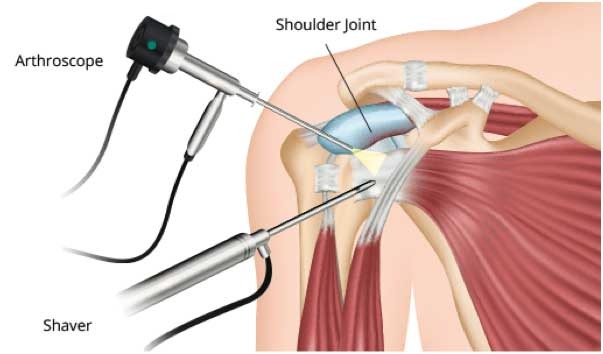Is it even possible to perform a single task without the involvement of our shoulder joint?
From shaking hands, passing objects to lifting weights, stress upon the shoulder is constant. Sometimes, a sudden jerk or repetitive movement can damage the muscles and tendons of the shoulder joint resulting in a torn rotator cuff. Such injuries are common in sports that require repetitive, overhead motion such as swimming, badminton, baseball, or others.
Nowadays, a minimally invasive technique is performed for shoulder arthroscopy to ensure optimal results and faster recovery. Still, a road to recovery will take around 6 to 8 weeks depending on the overall health of the patients. We understand that for some people, it could be overwhelming!
Here we’ve pulled some of the tips that will help you to pave the way for a safer and healthier recovery.
Wear a Sling
One of the crucial yet important things is to keep the shoulder immobilized right after the surgery for right healing. Carrying a sling in your hand during the daytime reduces swelling and pain in the shoulder, and even makes it easier to fall asleep at night. Make sure, you don’t sleep on the shoulder that has undergone surgery as that can lead to inflammation or pain. However, the sling itself serves as a good reminder! With support and stability, it restricts moving your arm entirely until the time it is allowed to do so.
Physical therapy & Exercises
During the first few weeks of recovery, your therapist may teach you specific exercises to strengthen your arm and shoulder. A combination of occupational and physical therapy is a great way to resume daily activities following shoulder surgery. In the early days, it is normal to feel pain and swelling after some exercises, just follow the instructions appropriately to avoid complications.
Moreover, these exercises are designed to improve the stability, range of motion, and strength of your shoulder. Attending these sessions accelerate your recovery in the right direction. Also, once recovered try maintaining physical fitness that keeps your body healthy and prevents future injuries.
Sleep carefully
It can be a challenge trying to find a comfortable sleep position after undergoing shoulder surgery. Sleeping in the right position is a necessary thing to follow to make your recovery safer. It is recommended to keep your arm in a sling, even during sleep to prevent movement and unnecessary strain. As your pain begins to decline, you can lie flat to sleep or add some pillows behind your back that will help to resist rolling back on the affected shoulder.
For more comfort, you can place a pillow under the operated shoulder for elevation. Doing this helps with swelling and keeps you from turning onto your shoulder.
Don’t skip on Medications
Pain reliever medications will be prescribed for a short period of time. You may try to have over-the-counter medication to manage any pain. It is advisable to check with your concerned doctor before taking any sort of medicine. Along with that, some of the medications to prevent blood clots, or inflammation especially after stitches were removed. Use those drugs as instructed or when necessary.
Be aware of your risk
One should be aware of the possible complications associated with shoulder surgery, so that you are alert about the precautions, and get additional medical attention if needed. In the initial days, taking care of the incision should be the highest priority. If you see any bruises, swelling, or have yellow discharge, contact your doctor as soon as possible.
Some of the other symptoms include high fever, sudden sharp pain, redness, numbness, or tingling in your fingers or hand. However, it is vital not to overstrain yourself while trying to resume your daily activities. Give your shoulder the time to heal fully.
Conclusion-
Patience is the key to ensuring a smooth and safe recovery from joint replacement surgery. We understand that keeping your arm immobilized in a sling for weeks is no easy thing to do. Even after that, you need to move your arms and shoulders with lots of precautions. Incorporating these tips into your post-surgery rehabilitation allows you to come out to the side before you know it!



Recent Comments